Cities are ecological spaces. But only relatively recently has this new vision of ecologically sophisticated cities gained momentum. Today, in increasing numbers, scientists, designers, and practitioners create useful knowledge about the nature of cities through study and research that can inspire public debate and decision makers. Thinkers imagine how to conceptualize urban nature; ecologists study its patterns and processes; sociologists demonstrate its importance to and for people; stewards devise ways to manage it; public health researchers reveal the relationships between healthy ecosystems and population health; designers and architects integrate human, green and blue with grey; and elected officials and city managers formulate and implement green policy.
And, importantly, more citizens are becoming more engaged in the conversation about urban nature – a conversation that directly relates to today’s critical debates about the livability, sustainability and resilience of human settlements. across the globe.
But let’s also be candid: there is a long way to go. Thought-leading dialogue in urban nature needs to be broadened and democratized. While there are a few dozen fantastic examples of cities leading the way on urban nature, there are about one million sub-national government entities in the world. Only a fraction of these have the interest, not to mention the tools and resources, to integrate nature and green thinking into their urban planning.
We want this blog to be at least one small part of the expanded and enriched conversation about urban ecosystems that our increasingly urbanized world requires. The Nature of Cities collective blog on cities as ecological spaces launched in June 2012, nearly six months ago. Since then we’ve had over 27,000 views from over 800 cities and 80 countries. And we have grown to 40 contributors from around the world. A million thanks for your support and interest.
To celebrate the new year here are excerpts from some popular posts at The Nature of Cities in 2012.
Vacant Land in Cities Could Provide Important Social and Ecological Benefits
by Timon McPhearson
New York City
Walk through any major city and you’ll see vacant land. These are the weed lots, garbage strewn undeveloped spaces, and high crime areas that most urban residents consider blights on the neighborhood. In some cases, neighbors have organized to transform these spaces into community amenities such as shared garden spaces, but all too often these lots persist as unrecognized opportunities for urban improvement. In densely populated cities with sometimes few opportunities for new park or green space development, small vacant lots could provide green relief, especially in low-income areas with reduced access to urban parkland.
And yet, few cities are taking advantage of these underutilized spaces to improve urban biodiversity and provide additional ecosystem services. What’s even more surprising is the vast amount of urban land that is categorized as vacant. Take New York City for example: in this urban metropolis there are 29,782 parcels designated by the city tax code as vacant within the city boundaries, not counting vacant land in the surrounding suburbs and exurbs. This totals more than 7,300 acres of land that could be providing important social and ecological benefits for urban residents. Read more…

Exploring the Nature Pyramid
by Tim Beatley
Charlottesville, Virginia
I have long been a believer in E.O. Wilson’s idea of biophilia; that we are hard-wired from evolution to need and want contact with nature. To have a healthy life, emotionally and physically, requires this contact. The empirical evidence of this is overwhelming: exposure to nature lowers our blood pressure, lowers stress and alters mood in positive ways, enhances cognitive functioning, and in many ways makes us happy. Exposure to nature is one of the key foundations of a meaningful life.
How much exposure to nature and outdoor natural environments is necessary, though, to ensure healthy child development and a healthy adult life? We don't know for sure but it might be that we need to start examining what is necessary. Are there such things as minimum daily requirements of nature? And what do we make of the different ways we experience nature and the different types of nature that we experience? Is there a good way to begin to think about this?
Here at the University of Virginia (Charlottesville, VA USA), my colleague Tanya Denckla-Cobb has had a marvelous and indeed brilliant idea. Why not employ a metaphor and tool similar to the nutrition pyramid that has for many years been touted by health professionals and nutritionists as a useful guide for the types and quantity of food we need to eat to be healthy. Call it, as Tanya does, the Nature Pyramid, and we have something at once novel and attention-getting, but potentially very useful in helping to shape discussion about biophilic design and planning. Read more...
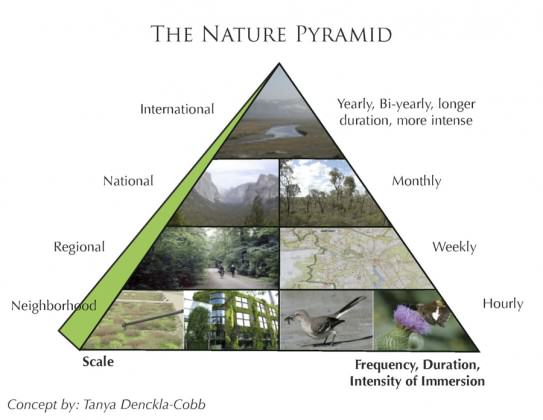
Neighborhoods and Urban Fractals – The Building Blocks of Sustainable Cities
by Paul Downton
Adelaide
Urbanisation is spreading across the face of the planet at an unprecedented rate. Most of it is opportunistic; ad hoc development and shanty towns rather than master plans. Virtually none of it, planned or otherwise, incorporates the elements of natural capital that are needed to create sustainable cities. Every time a new piece of urban fabric is created, or an existing piece is patched up and reworked, it may add to the value of the real estate but subtracts from the ecological health of the urban area. As each conurbation grows it diminishes the biological wealth of its region. Globally, the entire urban system trends towards becoming increasingly dysfunctional.
But what if it were different? What if, every time we added to the weave of this great human construct, we constructed pieces of urbanism that not only provided good shelter for people but also increased biodiversity and enhanced the value of natural capital?
For some time I have been intrigued by the idea that one might be able to identify patterns in urban systems that could provide a systematic model for developing cities that can always and simultaneously incorporate the essential characteristics of ecologically sustainable urbanism – and that this might be applicable across the spectrum from eco-village to metropolis. Read more…

Putting Nature Back Into the Natural Beauty of Rio de Janeiro
by Pierre André-Martin
Rio de Janeiro
It is an irony that despite the magnificent natural beauty of Rio de Janeiro, the city itself is largely devoid of functioning nature. It is now time for Rio to not only to host global events such as the World Cup and Olympics, but to host its primary nature, not outside the city, but in the middle of its streets, plazas and buildings. This blog discusses a case study – the greening of the Carioca River watershed that emerges from Tijuca National Park – as an example of what we could accomplish for the good of all Cariocas (which is what residents of Rio are called).
The presence of nature is decreasing in the daily life of Rio due to the expansion of the impervious area at many scales, from street to district scale, architectural models of arid constructions and street tree plantings that are getting old. Slowly the nature is being “expelled”, transforming the city in an hot and arid landscape. Read more…
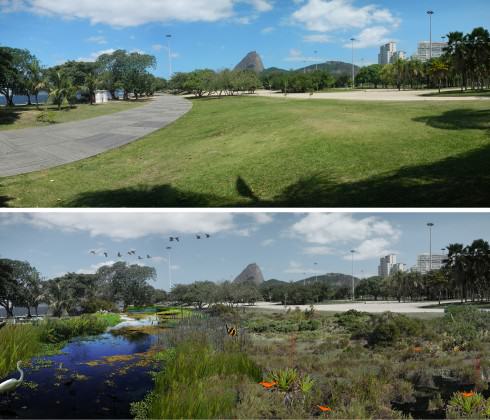
Cities of Nature
by Eric Sanderson
New York City
Many entries in this collective blog about the nature of cities will focus your attention on the nature that remains in cities, defined in terms of those patches of semi-natural habitat, the green bits, which are found in all cities, and which can be encouraged or discouraged by human action. Consider for example Celicia Herzog’s recent post delighting in the green landscapes in and around Rio de Janiero, connecting fragments of the famously-biodiverse Atlantic Forest in which Rio is emplaced. Or consider Mike Houck’s paean to the nature nearby, and within, Portland, Oregon, where his organization seeks to make Pacific Northwest cities both livable and loveable for people and other critters. Lovely pieces both, well worth your time.
I want to write about something related, but different, something which I think is both more encompassing and less well understood: that is, the total nature of cities. I want us to conceive of cities in their entirety as ecological places (more precisely, as ecological landscapes), where buildings, streets, boardwalks, sidewalks and parking lots, ball fields, basketball courts, fountains, and power plants, as well as the green bits, participate in a complex and evolving mosaic, where natural things happen. By nature I mean the interactions of soil and rock, air and water, energy and life, that characterize our verdant planet, and by natural, I mean the qualities of everyone and everything that participates in the great congress of life on Earth, including you and me. Those interactions and those qualities do not disappear when we build a city. Rather they take on new, idiosyncratic forms, which contrast in many, ordinary and extraordinary ways, with the ecological mosaics that formerly filled the place where the city now stands. Read more…
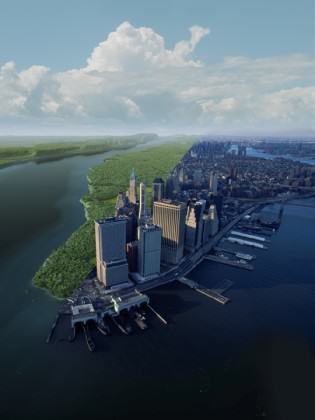
Credit: Markley Boyer / The Mannahatta Project / Wildlife Conservation Society; Yann-Arthus Bertrand / CORBIS. Originally published in Eric Sanderson’s Mannahatta: A Natural History of New York City (Abrams, 2009)
Let Us Champion “Biodiversinesque” Landscape Design for the 21st Century
by Maria Ignatieva
Uppsala, Sweden
I started my research as a landscape architect and urban ecologist in St. Petersburg, Russia. My home town is one of the biggest European cities and it is famous for numerous historical landscapes. In that time (1990’s) investigation of urban biotopes was a novelty. Passion for the history of landscape architecture resulted in my concentration on biodiversity of historical parks and gardens.
With a dramatic turn in my life I had a chance to research UK, US and then New Zealand urban flora and vegetation. One of the first striking surprises in the city of Christchurch, New Zealand, where I moved in 1997, was the similarity of urban floras. I could easily identify almost 90% of plant material! Urban landscapes, traditions and way of life in New Zealand were so similar to “motherland” England and to general Anglo-American culture. In this particular moment I felt myself a “global” person and started my research on unification of urban global landscapes and searching for alternative sustainable landscape design solutions. I saw as my goal to use knowledge of landscape ecology processes and match them with landscape design practice. Why the rest of the world so easily accepted British picturesque and gardenesque thinking even when this is not sustainable at all. How we landscape architects and environmentalists can convince ordinary citizens, as well as politicians and even our own professionals, to accept a new way of thinking — biodiversinesque — which gives a way and space to nature in our cities and not only “tidy” gardens with colourful flowers and lawns? Read more…
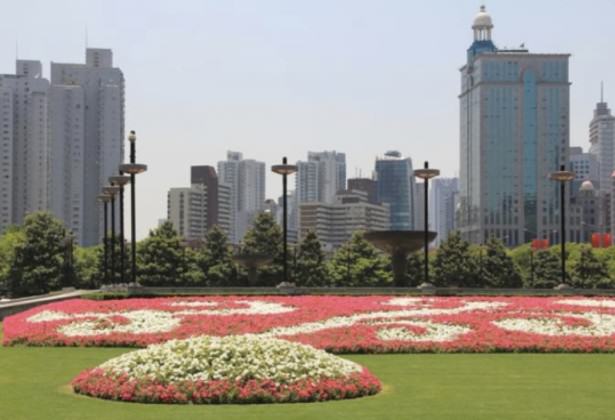
Discovering Urban Biodiversity
by Matt Palmer
New York City
The world is losing its biological diversity – or biodiversity – at an alarming rate. The primary force driving this is habitat degradation. When the places where animals, plants, fungi, and the myriad other organisms live are converted to other uses, conditions change and the prior residents often move on or die. The two major causes of this habitat degradation, or the extreme of wholesale habitat loss, are agriculture and urbanization. And it is certainly true that converting forests or wetlands to corn fields or apartment buildings changes the land cover, vegetation, soils, hydrology, and other environmental factors in drastic ways. We all expect that many of the kinds of organisms found in those “natural” environments will be missing from the “manmade” environments. And it stands to reason that, as more of the world is converted to “manmade” habitats, the space left for wild organisms diminishes and many are lost from the earth. [I’m using quotation marks around the words “natural” and “manmade” since these are rather gross oversimplifications of the range of human impacts – but that’s a topic for another day.]
While this narrative is true in the broad sense – there is abundant evidence of biodiversity loss resulting from human modification of the environment – it is too simple. It’s not just a case of cities (or farms, but this a blog about cities) replacing other kinds of ecosystems – there are some important nuances to this process. Many elements of nature – the rocks, soils, sunlight and water, but also many organisms – persist even as a city grows up around them. The kinds of species and their abundances will change after urbanization, but some wild life will remain from the previous community. Urban environments also encourage other kinds of organisms by providing habitats that were not present before. And urban environments are sometimes recolonized by species that were originally lost. Read more…
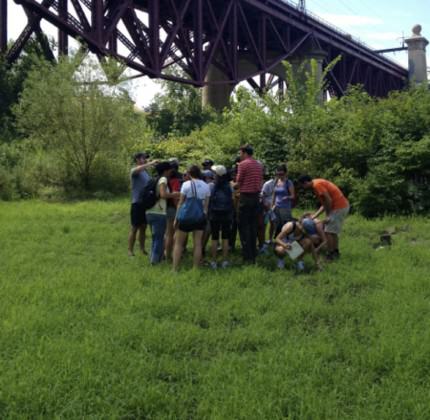
Cities and Biodiversity: A Call for Up-Scaled Action
by Russell Galt
Cape Town
For all of us working in the field of “cities and biodiversity”, it is well worth reflecting on our achievements. We can take personal satisfaction knowing that we contribute to a meaningful cause with tangible results. Every scientific paper, policy-brief and newsletter, every side event, meeting and presentation, every phone call, email and letter, even the brow-raising intensive travel regimes, collectively have contributed to a proliferation of projects, programmes, initiatives, tools and resources. Collectively they are driving a positive movement – that is, the movement to bring nature back into urban areas, sensitize citizens to its importance, reduce ecological footprints, and secure ecosystem services.
…or are we failing?
Although many local governments are making commendable progress in managing biodiversity, the vast majority are visibly struggling with a lack of expertise, funds and capacity. To bring this lagging peloton up to speed will require an up-scaling of technical support, an expansion of learning networks and a strengthening of performance incentives. Read more…

- Photo credits: Russell Galt.
Architecture, Ecology and the Nature-Culture Continuum
by Brian McGrath
Newark, New Jersey
The Venetians built a remarkable city made up of close-knit island neighborhoods within a briny lagoon, centered on fresh ground water cisterns in the middle of sand filled public plazas called campi. There are few cities where one feels so in touch with nature, in the stone of the buildings, the light bouncing off the remarkable reflective water of the lagoon and canals. This is the special nature that envelops one’s body moving through that great city.
New Yorkers built a grid of reflective towers, which offer residents the pagan delight of “Manhattanhenge,” when the sun sets directly at the perspective endpoints of its 155 parallel cross-town streets. On ordinary days, light bounces mysteriously from high towers blocks away into narrow airshafts of old-law tenements. Its grid slopes to two arms of the Hudson/Raritan estuary, and a bike riding tenement dweller knows how to escape the seasonal extreme heat or cold precisely according to a local knowledge of the glass-canyon microclimates.
Nature loving Bangkokians believe all things are alive, and offer food, flower garlands and incense to the ghosts that inhabit their city. As part of their animist roots, nature is an invisible force only partly felt through sensations of hope, dread or fear. Buddhist practice places nature in a realm beyond form and sense, but manifest in temples designed as models of the cosmos.
What all three of these cities face is the uncharted future of dramatic shifts in climate. Traveling between Venice, Bangkok and New York in 2011, I have seen the plight Venetians face with the high water of each high tide, a devastating flood in Bangkok that crippled a global industrial supply chain, and a ‘what if’ collective breath holding in New York as Hurricane Irene approached. Clearly urbanists and naturalists need to immediately address the dual challenges of rapid urbanization and climate change from a diverse range of cultural practices globally. In order to meet these pressing challenges we need to get beyond the ways we mentally separate nature and culture. Read more…
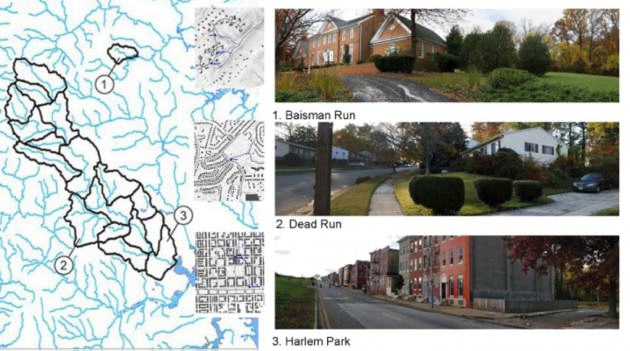
Souvlaki Coyote and Other Tales of Urban Wildlife
by Bob Sallinger
Portland, Oregon
Much of the fabulous writing on The Nature of Cities blog site to date has focused on integrating the built and natural environment, erasing, or at least softening the lines that separate the natural and the manmade. I would like to shift focus a bit and explore the intersection between people and wildlife and suggest that we would also be wise to consider how we integrate animals into our urban stories, poems, art, culture and collective narrative. We need to bring the same level of creativity and imagination that we are currently investing in transforming our physical landscape into repopulating our mental landscape with the diversity of life that surrounds us.
In short, we need to do a better job telling animal stories — urban animal stories.
I am not talking here necessarily of ecology, biology and natural history, although ecological literacy is of critical importance. I am taking at least one step further back into the realm of mythology, legend and folklore, about how we tell and retell our own story in a way that truly recognizes wild beings as fellow travelers on our urban landscapes.
For many years I ran Portland Audubon Society’s wildlife hospital. There we treated upwards of 3,000 injured wild animals and responded to more than 15,000 wildlife related phone calls each year. The vast majority of both calls and animals emanated from the urban and suburban landscape. Read more…

From International Committment to Local Action: The Singapore Experience
by Lena Chan
Singapore
The Convention on Biological Diversity (CBD) currently has 193 Parties. It is indeed a challenge for each of the Parties, as a nation, to implement their commitments to an international convention like the CBD. How can each Party know how successful it has been in fulfilling its obligations to the CBD? In April 2002 at 6th Meeting of the Conference of the Parties (COP6) to the CBD, the Parties committed themselves to achieve a target of reducing significantly the rate of biodiversity loss at the global, regional and national level by 2010.
If we cannot measure quantitatively what biodiversity we have how can we manage and protect it? If we do not evaluate our biodiversity conservation efforts, how do we know that they are achieving what they were set to do? These were the questions that Singapore pondered over and we would like to share what we have done to help us meet our international commitments through local action. Read more…

Natural Disasters and the Nature of Cities
by Glenn Stewart
Christchurch, New Zealand
Environmental traumas are here. Global climate is a reality that is bringing extremes in weather as we have seen recently with the devastating impacts of Hurricane Sandy in the northeast of the USA. And in the last several years there have been massive earthquakes that have devastated cities in Japan, Haiti and New Zealand. To manage the effects of these traumas on the urban environment, we first must identify the socio-ecological drivers governing the urban ecosystems and then ascertain the degree of departure of the “new-normal” state from the pre-trauma conditions. Individual and institutional responses set the trajectory of recovery and subsequently create a “new-normal” not only for ecological but also social systems.
The Christchurch earthquakes that began in September 2010 provided a unique opportunity to address the impacts of traumas on the urban environment and in particular, identifying “resilient” components of coupled ecological-social systems. In this blog I will outline a study focussing on urban vegetation succession post-earthquakes. In later contributions I will update the findings of this study based on further data analysis and discuss other aspects, such as the effects on urban fauna, and implications and options for future urban greening thru ecological design. Read more…

We’re Number 1* (*Depending): The Values Embedded in “Most Green City” Lists
by David Maddox
New York City
Who doesn’t love a list? The 100 richest people in the world. The best guitar players of all time. The most beautiful beaches in the world. The world’s “greenest cities”. The USA’s most livable cities. The most resilient cities. For people interested in the particular theme of the list, the lists are fascinating. We can compare them against our own ideas and experience. We can debate and complain about the order. (I personally agree with Jimi Hendrix at number 1 in Rolling Stone’s list of guitar players, but think that Ry Cooder at #31 is scandalously low.)
Some lists are based on simple and easily understood data, such as the Forbes list of 2012’s richest people in the world. Let’s accept as correct Carlos Slim Helú’s valoration ($69 billion) and agree he has the most scratch. Among the swells, Mukesh Ambani, whose personal skyscraper towers above Mumbai and has a green wall, is a laggard and in the (relative) poorhouse at #20. A list of the most beautiful beaches, like the guitar players, is much more subjective, but nevertheless is grounded in a set of attributes, such as the beauty of the physical setting, the soft whiteness of the sand, and so on.
The critical thing to keep in the front of one’s mind when pondering all such lists is that they are based on values, which are in turn based on concepts of what is important. Read more…



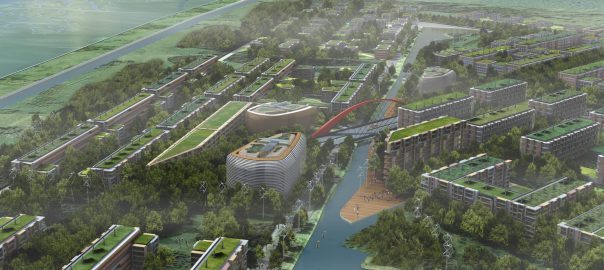
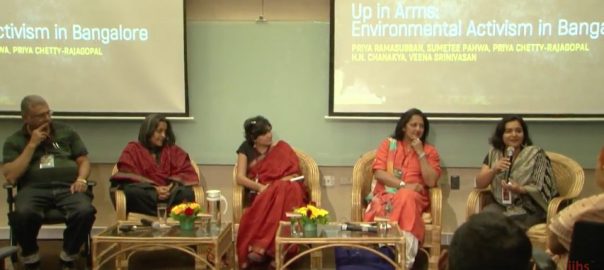

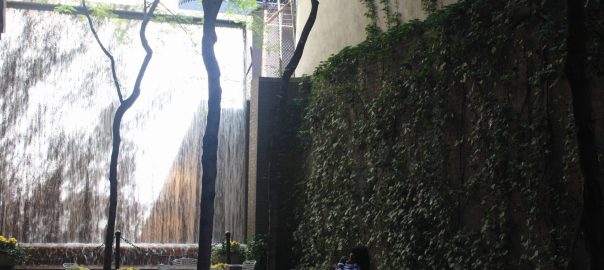

Leave a Reply